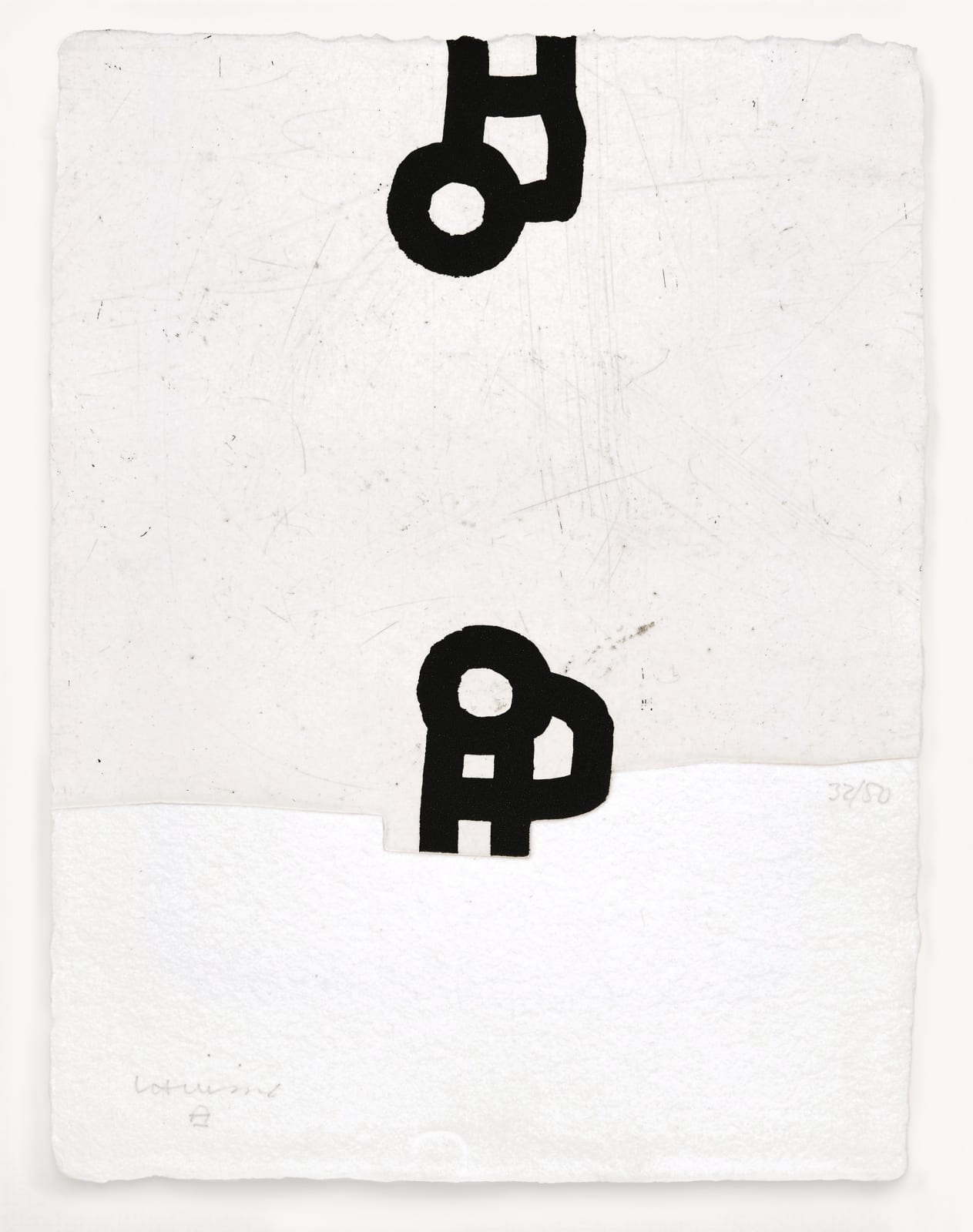Eduardo Chillida
Further images
Visually, ‘Anjana’ is both stark and striking. The black forms that punctuate the white expanse of the paper are bold yet enigmatic, suggesting figures or symbols that invite interpretation. These shapes, simple yet profound, evoke a sense of balance and harmony, characteristic of Chillida's abstract language. The etching's reductivist aesthetic, combined with the rich texture of the Lafranca paper, creates a compelling interplay of light and shadow, adding depth and dimension to the piece. This delicate balance between the abstract and the tactile mirrors the ethereal nature of its namesake.
The title ‘Anjana’ holds a poetic resonance within this work. In Cantabrian mythology, Anjana is a benevolent fairy, a nymph-like creature known for her kindness and protective nature. Chillida's abstract representation captures the essence of this mythical figure, not through literal depiction but through evocation. The black forms could be seen as the fleeting glimpses of the fairy herself, partially hidden yet ever-present, embodying her elusive and enchanting nature. The simplicity of the forms contrasts with the complexity of the myth, creating a space for the viewer's imagination to wander and connect with the cultural narrative of this region on Northern Spain.
This artwork’s creation and its publication by Fernando Silió, a gallerist based in Santander, Cantabria, further illustrate Chillida's deep understanding of place and cultural specificity. By engaging with the myth of Anjana, Chillida not only pays homage to the folklore of Cantabria but also embeds a piece of this culture within his abstract language. The collaboration with Silió underscores the artist’s intent to honor and reflect the unique essence of Cantabrian heritage. Through ‘Anjana,’ Chillida demonstrates his ability to transcend mere abstraction, weaving together myth, material, and a profound sense of place into a unified artistic expression.
NOTES
This artwork is signed and numbered in pencil.
Published by Fernando Silió, Santander, and printed at Taller Hatz, San Sebastián.
Provenance
Galeria Fernando Silió, SantanderGalerie Barthelemy Bouscayrol, Biarritz
Private collection, Europe
Private collection, New York






